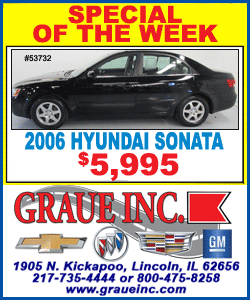|
Economists see
ride-hailing industry as ripe for competition
 Send a link to a friend
Send a link to a friend
 [August 27, 2016]
By Heather Somerville [August 27, 2016]
By Heather Somerville
SAN FRANCISCO (Reuters) - Chinese
powerhouse Didi Chuxing's acquisition of Uber Technologies Inc's China
operations marked the biggest move yet toward consolidation in an
industry that many investors and Silicon Valley pundits view as a
winner-take-all game.
On the day the Didi deal was announced earlier this month, Uber board
member Bill Gurley said Uber's rivals in other markets had a slim chance
of splitting the market with the dominant player, just as Uber struggled
to erode Didi's share in China.
After China, the industry will consolidate in other markets, said Hans
Tung, an Asia-focused investor and managing partner at GGV Capital,
which backed Didi and Grab, a Singapore-based ride service.
"There will be a dominant No. 1," he said that same day.
The consensus of 11 economists interviewed by Reuters, however, suggests
an entirely different scenario, one of perpetual competition in a
business with relatively few barriers to entry.
"That one firm wins is a narrow and not accurate way to think about
these firms," said David Evans, chairman of the Global Economics Group
and co-author of a recent book that included Uber, "Matchmakers: The New
Economics of Multisided Platforms."
Ten other economists who have studied ride-hailing agreed that the
growing industry, which UBS estimates to be a $40 billion market, has
room for at least two successful players, and perhaps a few smaller
ones.

The industry, they said, has none of the elements that traditionally
have enabled single companies to control a sector. If it is the first of
its kind, a company can dominate markets that have huge infrastructure
costs, such as putting up cell towers or laying pipes; a large workforce
of employees with specialized skills; and customers who get locked into
a service and have difficulty leaving for competitors.
Ride-services, by contrast, are relatively cheap to start, depend on
contract labor with no inherent loyalty or specialized skills, and have
free apps that can be downloaded in seconds.
"You may not want to try a new social networking site if your friends
aren't on it," Evans said. "But you don't care what app your friends use
for ride-hailing."
The question of whether on-demand ride services will remain open to new
players has vexed startups and investors since Uber started the industry
seven years ago.
Companies taking on Uber include Lyft in the United States, Grab in
Southeast Asia, Ola in India and newer startups like New York City's
Juno. In the United States, in particular, part of Uber's attraction to
investors is the chance at grabbing the entire industry.
In a statement, Uber said: "The ridesharing industry around the world is
highly competitive and innovative. That's good for riders."
Uber investor and board member Gurley argued that any competitor would
need to pursue a different strategy - perhaps offering more luxury and
high-end services - to successfully battle Uber in its strongest
markets.
Didi, Ola and Grab did not respond to requests for comment.
When business magnate Carl Icahn invested $100 million into Lyft in
early 2015, he told media outlets he saw "room for two." Chris Sacca, a
prominent venture capitalist who invested in Uber, responded "This is a
winner-take-all game," on Bloomberg television.
Lyft has hired an M&A firm and recently explored the possibility of
acquisitions by several companies, a source familiar with the
discussions said, and reports of a possible sale stimulated talk of
whether it could compete with Uber.

[to top of second column] |

A driver leaves the office of taxi-hailing service Uber Inc during a
driver recruitment event in Hong Kong, China December 29, 2015.
REUTERS/Tyrone Siu/File Photo

Lyft says it can. In the United States, it says it more than tripled its
drivers to about 315,000 in the last year. Between October and May it
nearly doubled its annual gross revenue to $1.9 billion - although that
figure does not reflect the many rider discounts and promotions Lyft
offers.
Uber has 1.5 million drivers and projected $26 billion in gross revenue globally
this year, based on a 2015 presentation for investors.
Last year, Lyft hit another benchmark: the wait time for a ride is three
minutes, on par with Uber, said President and Co-Founder John Zimmer. At three
minutes or less, a passenger will almost always complete the ride.
"You need a certain level of scale to get to three minutes," Zimmer said,
referring to the number of drivers and passengers. "Once you reach that, if
someone else has more scale, it doesn't matter."
New York-based Juno has brought on 12,000 drivers since launching earlier this
year and already has hit the three-minute wait time in Manhattan, said
Co-founder and CEO Talmon Marco.
"This is a fairly local industry," Marco said. "You can be a hero in New York
and you can be zero in California, and it's OK."
In India, Uber and Ola are neck and neck around 45 percent of the market each
after Uber's market share fell and Ola's rose in 2015, according to market
research firm 7Park Data.
The challenge for new startups, however, is that leading companies subsidize
their drivers and passengers as they prioritize gaining market share over
profit. Both Uber and Lyft have spent heavily on driver bonuses and rider
discounts and promotional credits.
"Everything that has happened in this space is completely artificial and funded
by a glut of VC money," said Daniel Ramot, CEO and co-founder of startup Via,
which completes about 200,000 rides each week in New York.
Economists argue that Lyft can be a profitable company with roughly 20 percent
of a market, which would allow it to reduce expenses through economies of scale.
Lyft and Uber only release market share statistics selectively, but Lyft
maintains it has more than a 20 percent share in the majority of its top 20
regions.
An electric company, by comparison, would need massive scale to achieve enough
efficiency to allow for profits, said Stephen Margolis, an economist and
anti-trust expert at North Carolina State University.

Max Wolff, an economist at Manhattan Venture Partners, believes competition will
thrive mainly because ride-hailing technologies are not overly complicated and
drivers aren't earning enough money to be loyal to a single company.
There is room for other players even if Uber is dominant, he said. "They're not
as big, but they're there, too. They're not some wheezing, dying remnant."
(Reporting by Heather Somerville; Editing by Peter Henderson and Brian Thevenot)
[© 2016 Thomson Reuters. All rights
reserved.] Copyright 2016 Reuters. All rights reserved. This material may not be published,
broadcast, rewritten or redistributed. |